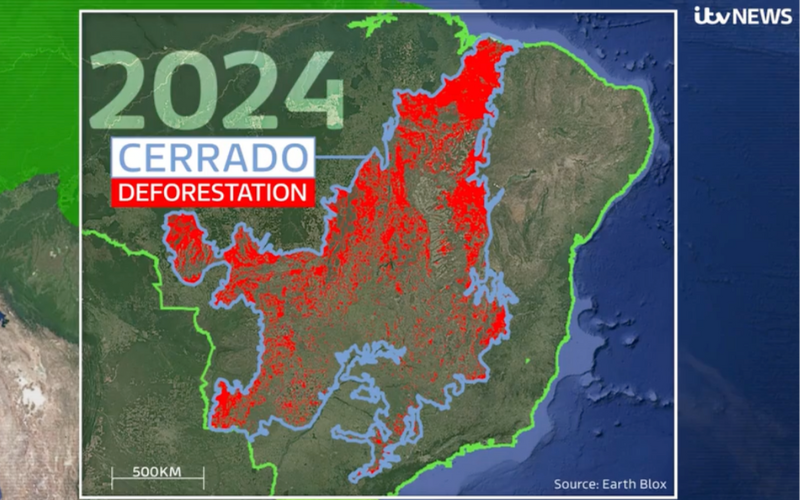At a time when planetary emergencies are not just hypothetical but unfolding in real-time, there is genuine promise in harnessing artificial intelligence (AI) to help manage nature-related risks. The Taskforce on Nature-Related Financial Disclosures (TNFD) has set out to drive transparency and accountability in the way businesses understand and report on their impacts on nature. And while AI and machine learning (ML) could significantly advance these goals, the technology is still evolving. It will take some time before commercial institutions trust AI for reporting, so we must focus on maximising what’s already available while paving the way for an AI-enhanced future in nature strategy.
The promise and current reality of AI in nature-related risk management
AI has the potential to be a game-changer in nature risk management. By processing vast amounts of complex data, AI could elevate the accuracy of insights into nature dependencies and impacts, speeding up critical decision-making processes. In the context of TNFD, AI could become a vital tool, helping organisations accurately disclose nature-related risks and align with the evolving landscape of environmental reporting requirements.
However, while this potential is vast, AI applications for nature are not yet widely available and there are several barriers to its adoption by corporations. To foster TNFD’s vision of nature-positive change, we must address these challenges head-on. I see two key barriers to AI adoption in nature risk management:
1. Commercial data silos in nature tech
One of the most significant barriers to progress is data fragmentation in nature technology. While we now generate unprecedented amounts of nature data, from environmental DNA (eDNA) to bioacoustics and hyper-local geospatial datasets, much of this data is locked behind commercial licences. This lack of access creates bottlenecks, hindering the development of comprehensive AI models that could address nature-related risks at scale.
With many datasets being siloed by commercial interests, we are likely to see a growing number of foundational AI models, each trained on unique data, each solving isolated issues and lacking interoperability. This patchwork approach risks adding confusion rather than creating a cohesive solution to nature-related risk management.
2. The reproducibility and transparency challenge
For AI in nature technology, reproducibility and transparency are major hurdles. In the scientific world, reproducibility — obtaining consistent results under the same methodology — is essential. However, achieving reproducibility in AI-driven models can be elusive due to several factors:
- Stochastic nature of AI models: AI models are often stochastic, meaning that slight changes, even rounding errors, can produce vastly different results. This poses significant challenges for consistent nature risk assessment.
- Hardware variability: Running identical models on different hardware setups often yields different outcomes, which complicates efforts to scale AI in commercial settings.
- Data transparency constraints: The proprietary nature of many datasets used in AI training hampers open access, making it difficult to validate results and establish confidence in the models. This lack of transparency could present substantial risks in high-stakes nature reporting.
For businesses, particularly those with high regulatory, financial, and reputational stakes, these challenges are a significant barrier to the trust required for widespread adoption of AI in nature strategy.
Recommendations for moving forward with AI in nature risk management
To responsibly advance nature risk management while AI technology matures, we can take several practical steps:
1. Champion open data and collaborative efforts
Data silos limit our ability to create comprehensive, effective AI models for nature. Advocating for open data policies and promoting data-sharing agreements will help dismantle these silos and allow more unified model development. Such collaboration can drive more robust AI solutions that are more reliable and widely applicable.
2. Prioritise standards for reproducibility and transparency
Industry-wide standards are essential to improving the reliability of AI-driven insights. By working together to establish guidelines that ensure AI models are reproducible and transparent, we can foster confidence in these tools, enabling them to be deployed effectively in high-stakes applications such as nature risk management.
3. Leverage existing tools and accessible data
With AI in nature risk management still evolving, it’s crucial to start with effective tools and data available today. For companies reporting to TNFD, Earth Blox provides a streamlined solution to complete the Locate and Evaluate stages of the LEAP framework. Our TNFD package uses trusted spatial data from premium and open-access sources, providing reliable metrics on nature impacts and dependencies. Learn more with our guide to TNFD.
Charting a balanced path toward AI-enhanced nature strategy
AI holds incredible potential for enhancing nature strategy, but a measured approach is essential. While the technology is still maturing, there is much we can do now by focusing on using current tools effectively, advocating for open data, and supporting the creation of standards for reproducibility and transparency. These actions align with TNFD’s mission to foster transparency and accountability in nature-related risk management, allowing us to navigate the path to a sustainable future while AI technology progresses. With collective expertise and a pragmatic approach, we can drive meaningful change now while preparing for a future where AI plays a transformative role in protecting our natural world.
Dr. Genevieve Patenaude is CEO and co-founder at Earth Blox. Previously an associate professor at the University of Edinburgh's School of Geosciences, she led international research projects on Earth Observation and big data, and was a contributing author to the Good Practice Guidance for Land Use, Land-Use Change and Forestry for the Intergovernmental Panel on Climate Change. Equipped with this experience, her mission is to enable positive action for the future of life on our shared planet through Earth Blox.


.png)
